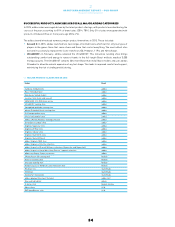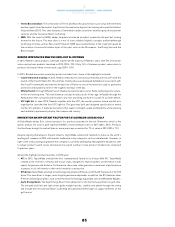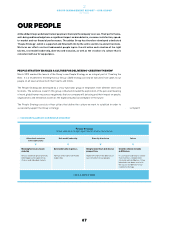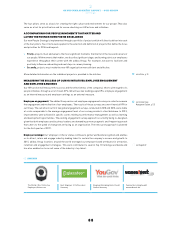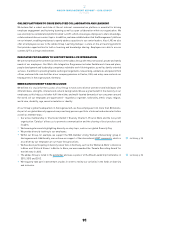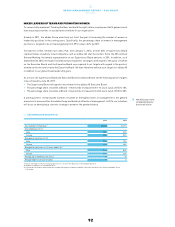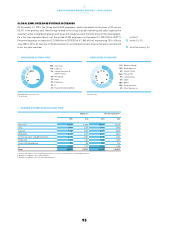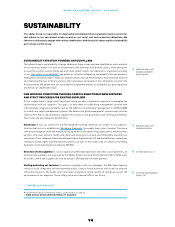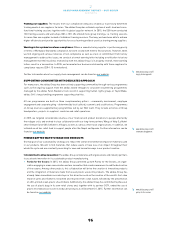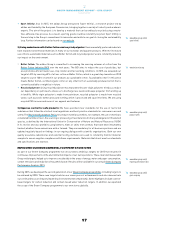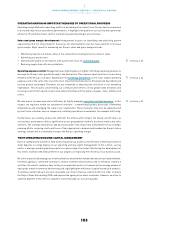Reebok 2015 Annual Report Download - page 98
Download and view the complete annual report
Please find page 98 of the 2015 Reebok annual report below. You can navigate through the pages in the report by either clicking on the pages listed below, or by using the keyword search tool below to find specific information within the annual report.
GROUP MANAGEMENT REPORT – OUR GROUP
Sustainability
94
2
SUSTAINABILITY
The adidas Group is responsible for developing and implementing sustainable business practices
that adhere to our operational needs as well as our social and environmental obligations. We
therefore continuously engage with various stakeholders with the goal of enhancing the sustainability
performance of the Group.
SUSTAINABILITYSTRATEGY FOUNDED ON FOUR PILLARS
The adidas Group’s sustainability strategy addresses those issues we have identified as most material
for our business model. It is built on achievements and learnings from previous years, while taking into
account the current societal landscape and future global trends. Our approach is organised according
to our ‘four pillars of sustainability’ and guides us in further integrating sustainability into our business,
finding more innovative ways to make our products while continue minimising our environmental footprint
and improving the lives of factory workers, their employees and people in the communities in which the
Group operates. We believe that our sustainability programme enables us to improve our good reputation
and hence our shareholder value.
FAIR WORKING CONDITIONSTHROUGH CAREFUL SELECTION OF NEW SUPPLIERS
AND STRICT PROCESSES FOR EXISTING SUPPLIERS
As our supply chain is large, multi-tiered and varied, we have a systematic approach to managing the
relationships with our suppliers. Our goal is to help them in establishing management systems with
internationally recognised standards such as ISO 14001 for environmental management or OHSAS 18000
for health and safety management systems. We believe that good management systems help factories
improve their day-to-day operations, support the process of self-governance and continuously enhance
their social and environmental performance.
Strict rules: It was our concern for the well-being and working conditions for workers in our suppliers’
factories that led us to establish our ‘Workplace Standards’, the supply chain code of conduct. They are a
contractual obligation under the manufacturing agreements the adidas Group signs with its main business
partners and cover workers’ health and safety and provisions to ensure environmentally sound factory
operations. These standards follow International Labour Organization (ILO) and United Nations conventions
relating to human rights and employment practices, as well as the model code of conduct of the World
Federation of the Sporting Goods Industry (WFSGI).
Selection of new suppliers: In close cooperation with Global Operations and other sourcing entities, all
potential new suppliers are assessed by the adidas Group’s Social & Environmental Affairs (SEA) team,
and orders with a new supplier can only be placed if SEA approval has been granted.
Visiting and rating our factories: To enforce compliance with our standards, the SEA team regularly
conducts social compliance and environmental audits, using in-house technical staff as well as external
third party monitors. By means of an innovative compliance rating system (C rating) we assess the
performance of our suppliers. These ratings are a non-financial KPI for our Group.
www.adidas-group.com/s/
managing-sustainability-
general-approach
www.adidas-group.com/s/
standards-and-policies
see Global Operations, p. 74
see Internal Group Management
System, p. 102
MATERIALITYANALYSIS
More information about our materiality analysis can be found on our website.
WWW.ADIDAS-GROUP.COM/S/MATERIALITY-ANALYSIS


